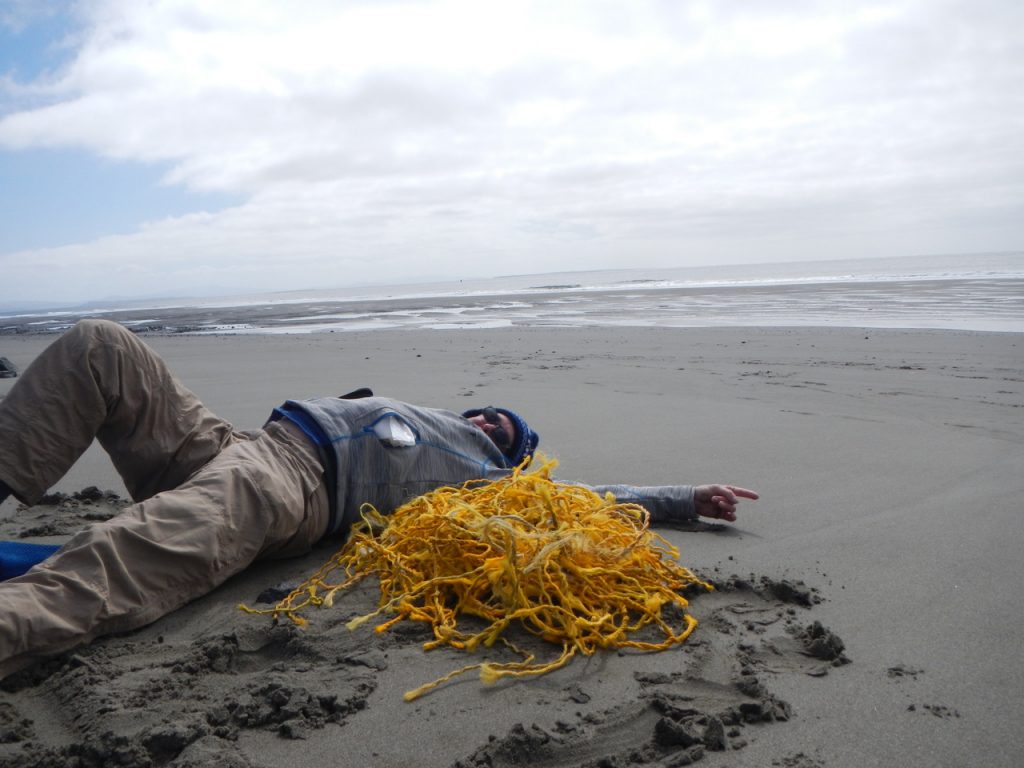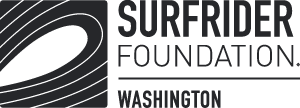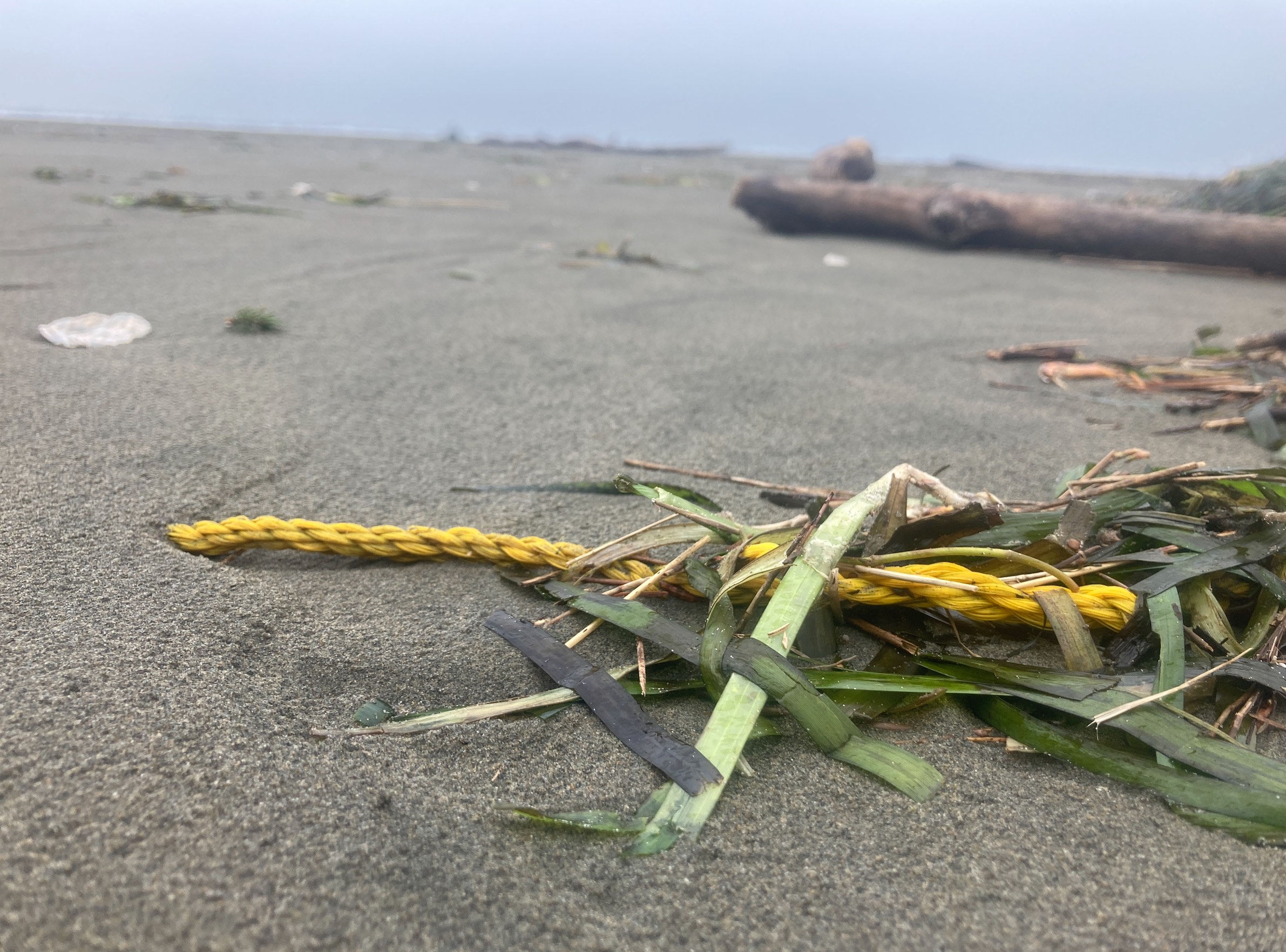
How volunteers, partners organizations, and shellfish farmers are teaming up to tackle a Washington marine debris problem
If you’ve been to a beach cleanup on Washington’s outer coast, you’ve probably seen them - small segments of braided rope, usually 6 - 12 inches long, and bright yellow. We call them...wait for it...yellow ropes. Or trims, if you want to mix it up.
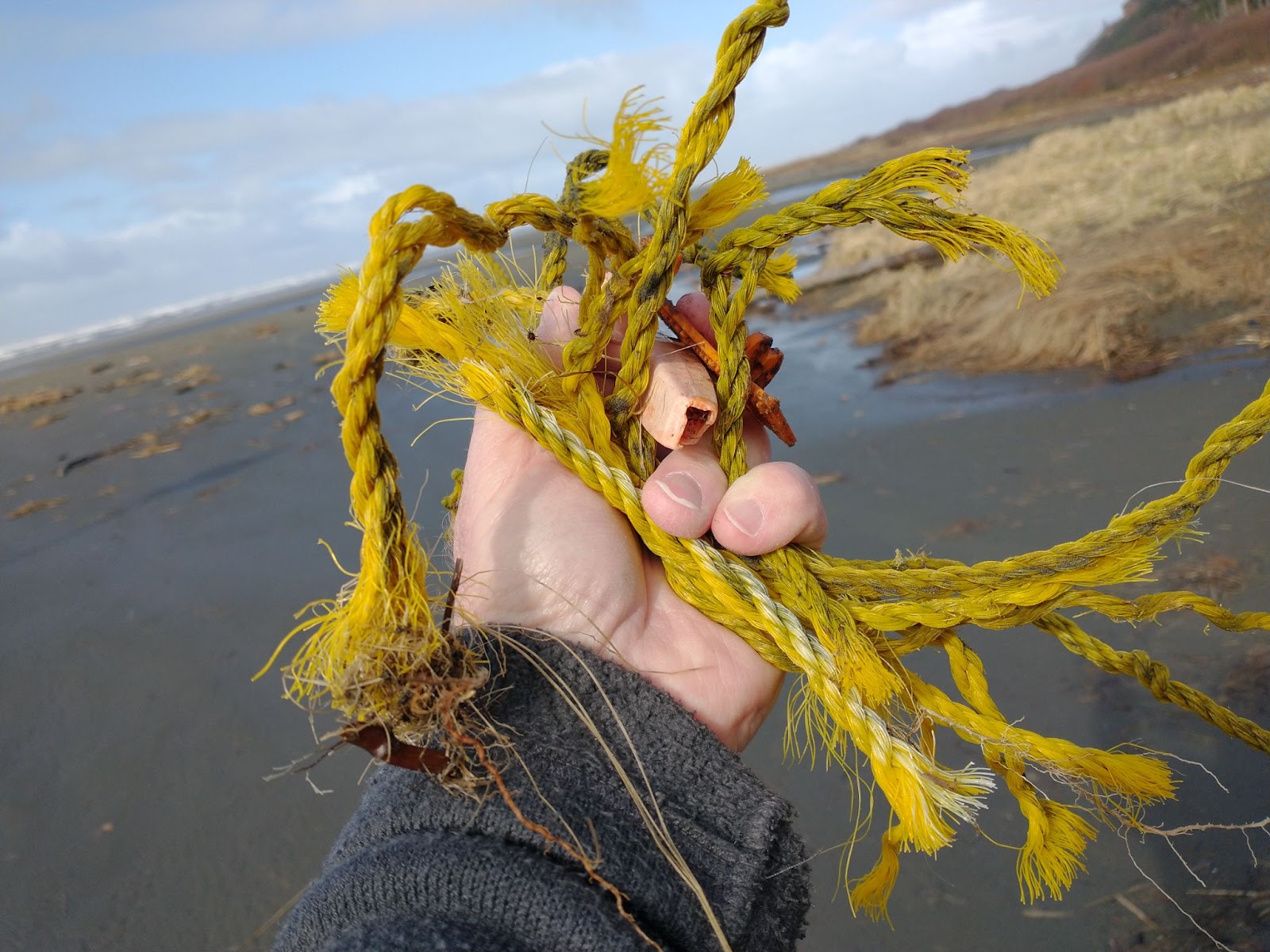
Washington Surfrider volunteers have been seeing these yellow ropes on our beach cleanups for years. And we’re not the only ones - Washington CoastSavers, Twin Harbors Waterkeeper, the Westport Historical Society, and other local groups all work to remove hundreds of tons of debris from Washington’s beaches every year, collecting data along the way. These data are important for identifying solutions and driving policy. As the yellow ropes piled up, we realized that, unlike many global plastic pollution problems, this one has a local source and therefore a local solution.
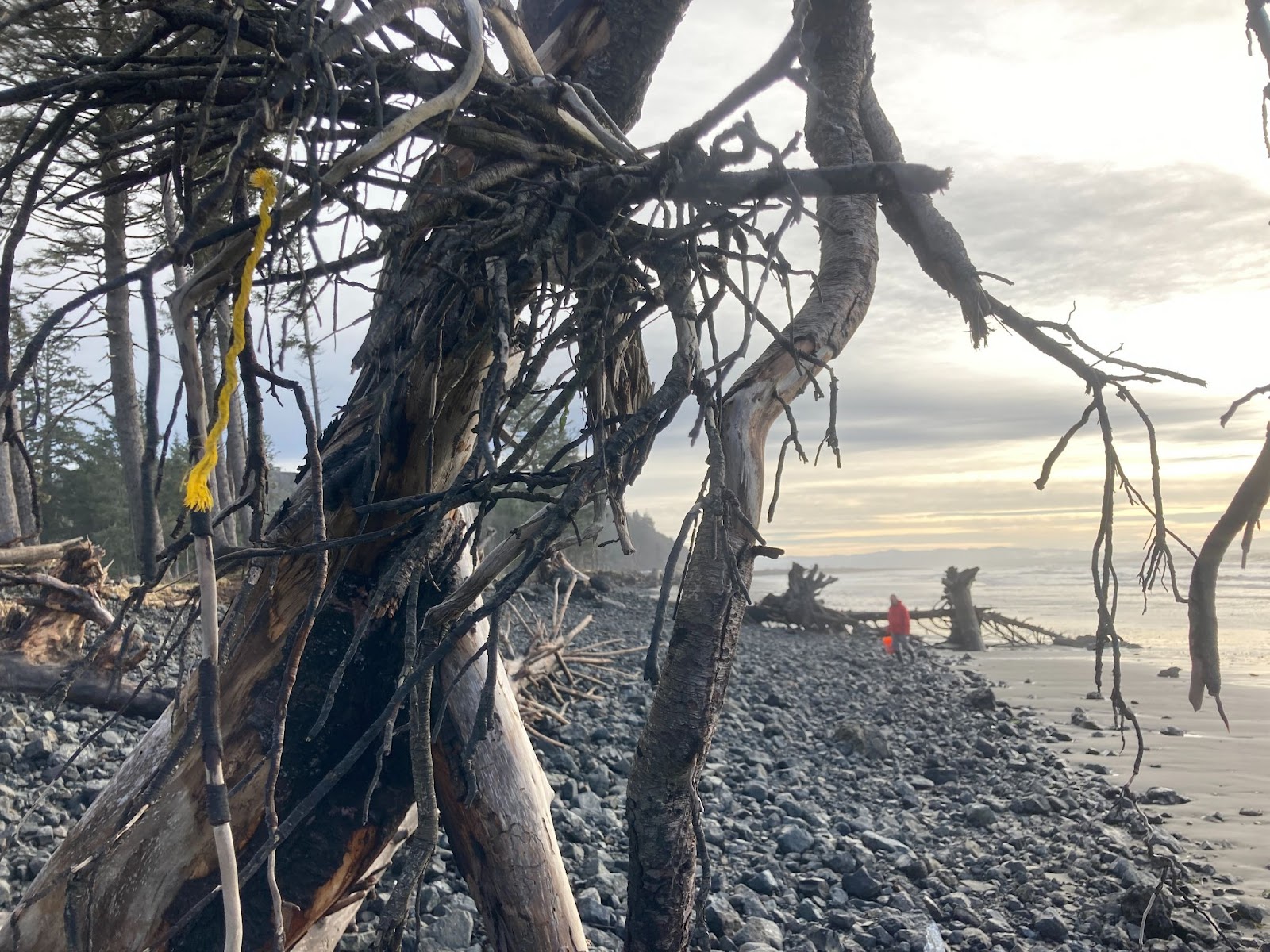
So where do they come from? The yellow ropes are made of three-strand polypropylene line that is lightweight, durable, and floats. This makes them particularly suitable for off-bottom oyster aquaculture, a method of growing oysters in which a ‘mother-shell’ (an old shell with seed oysters, or spat, attached to it) is woven into the line and suspended in shallow water, where it grows into a cluster of tasty shellfish. Eventually these long lines are cut as each cluster is pulled aboard then brought to a facility for processing. After being harvested, those shells are often spread back out into the environment to grow the next generation of oysters. Although shellfish farmers remove what they can, some trims are embedded in those clusters and end up back in the environment, where they wash up on our beaches and eventually break down into plastic microfibers.
In the past year alone, Surfrider volunteers, along with members of our partner organizations and shellfish industry leaders, have hosted numerous ‘yellow rope roundups.’ These targeted beach cleanups have removed tens of thousands of these brightly colored bits of rope from our coast. During one such cleanup, strategically timed after a king tide, we collectively removed 16,172 pieces of rope in a single day!
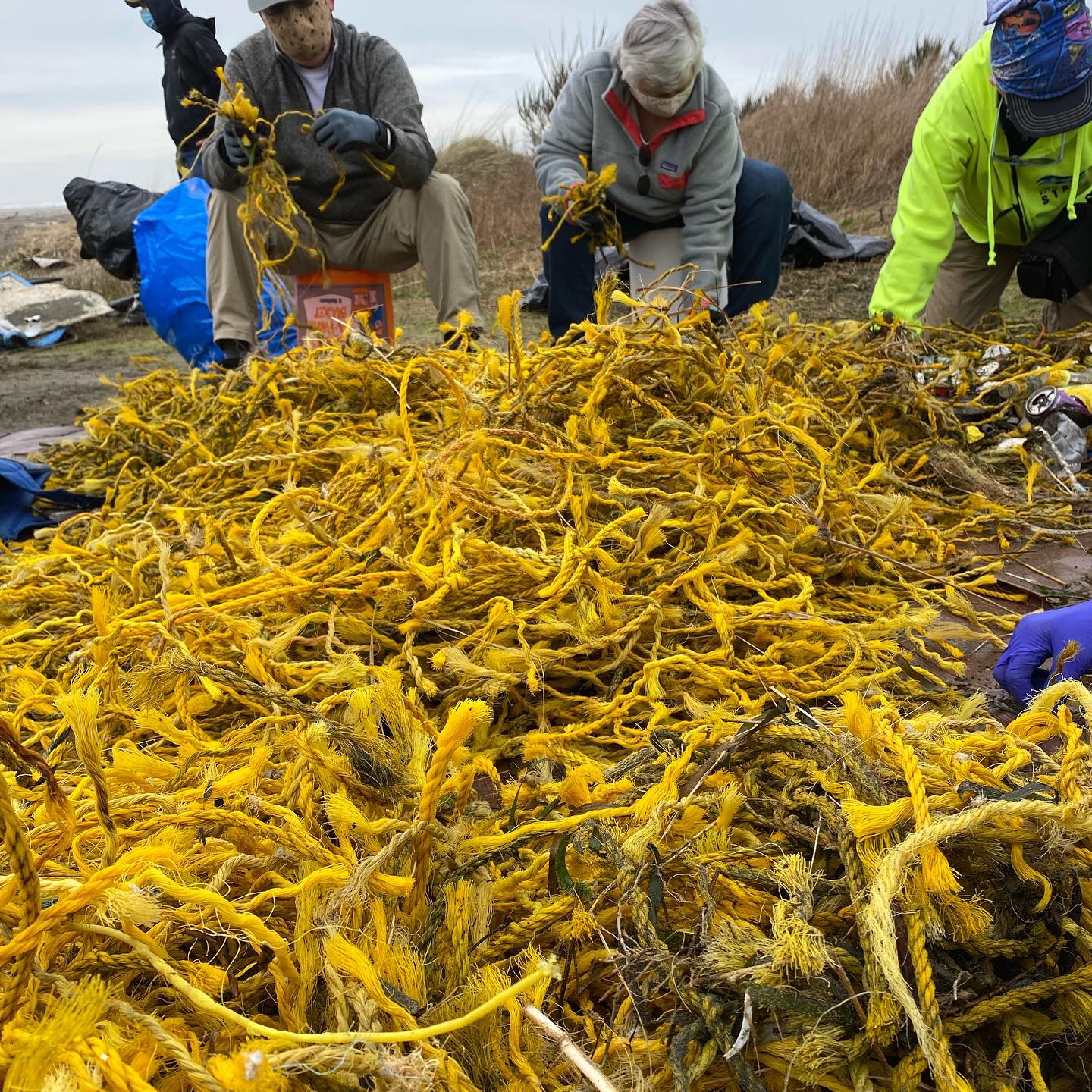
In addition to organizing collaborative cleanups to remove trash from our beaches, volunteers, shellfish industry representatives, and other community members are actively working on stopping the problem at its source. They met for the first time, virtually, in 2020, and continue to hold regular meetings, coming together to identify effective solutions. Some of those solutions include outreach and education, improving industry processes (such as segregating clean shells from contaminated shell piles), and finding novel ways to remove the ropes embedded in those shells. We are also working with local partners, such as Net Your Problem, to recycle the ropes in an effort to close the loop.
The fight against plastic pollution can feel overwhelming and futile at times, but if we come together we can find data-driven solutions to these problems. Here in Washington, we already see fewer yellow ropes on our beaches, and we have our community to thank for it.
